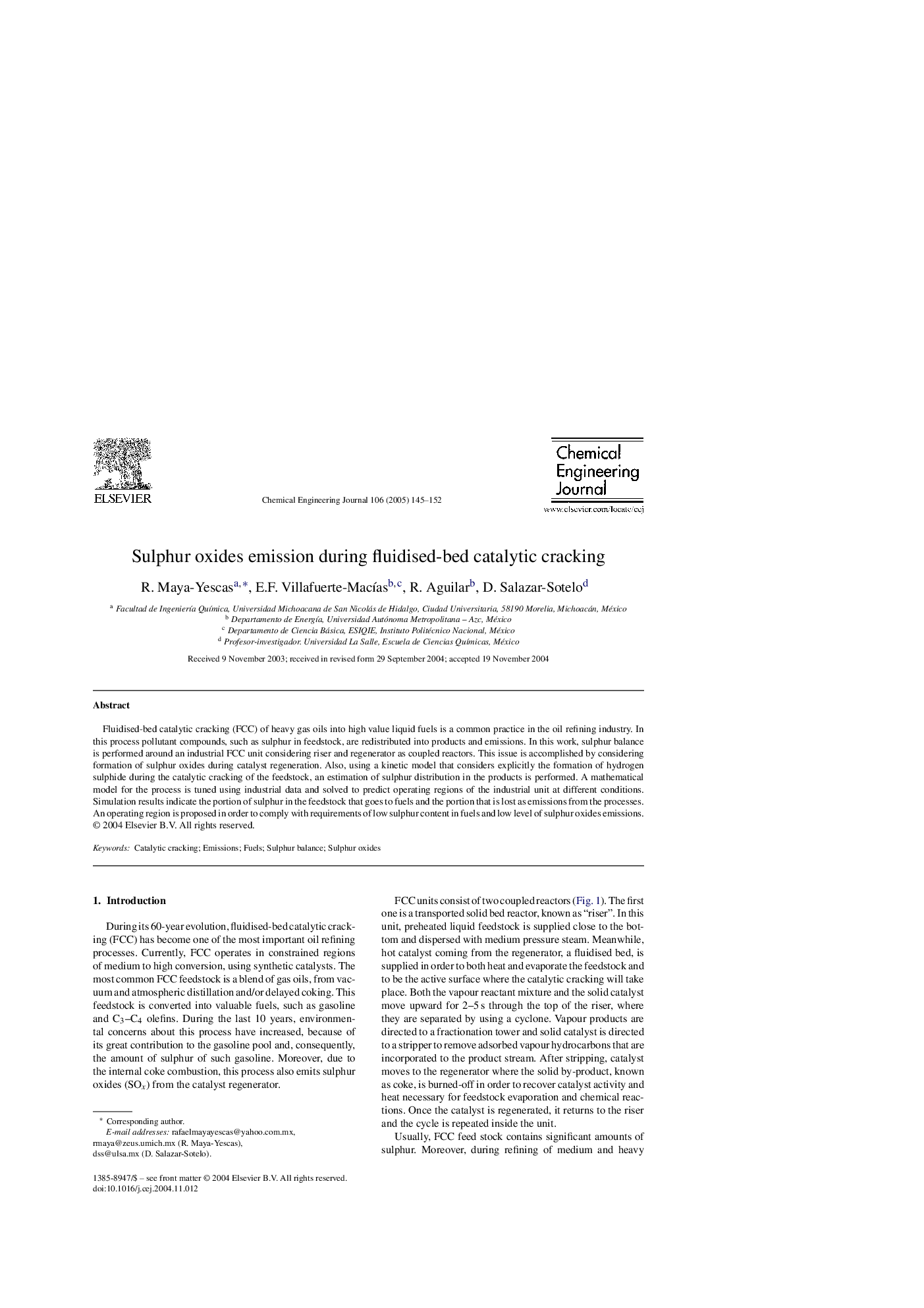| Article ID | Journal | Published Year | Pages | File Type |
|---|---|---|---|---|
| 10261059 | Chemical Engineering Journal | 2005 | 8 Pages |
Abstract
Fluidised-bed catalytic cracking (FCC) of heavy gas oils into high value liquid fuels is a common practice in the oil refining industry. In this process pollutant compounds, such as sulphur in feedstock, are redistributed into products and emissions. In this work, sulphur balance is performed around an industrial FCC unit considering riser and regenerator as coupled reactors. This issue is accomplished by considering formation of sulphur oxides during catalyst regeneration. Also, using a kinetic model that considers explicitly the formation of hydrogen sulphide during the catalytic cracking of the feedstock, an estimation of sulphur distribution in the products is performed. A mathematical model for the process is tuned using industrial data and solved to predict operating regions of the industrial unit at different conditions. Simulation results indicate the portion of sulphur in the feedstock that goes to fuels and the portion that is lost as emissions from the processes. An operating region is proposed in order to comply with requirements of low sulphur content in fuels and low level of sulphur oxides emissions.
Related Topics
Physical Sciences and Engineering
Chemical Engineering
Chemical Engineering (General)
Authors
R. Maya-Yescas, E.F. Villafuerte-MacÃas, R. Aguilar, D. Salazar-Sotelo,
